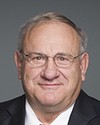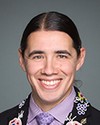Mr. Speaker, I am thrilled to rise today to speak to Bill C-374, which would amend the Historic Sites and Monuments Act to create three new Historic Sites and Monuments Board of Canada positions, thereby providing for first nations, Inuit, and Métis representation on the board.
This subject is of tremendous importance to me. When I was re-elected, our oath of allegiance was changed to reflect this. Although many people find it odd that we still swear allegiance to Queen Elizabeth II, we nevertheless added a sentence to the oath about how, in carrying out our duties, we will honour and respect the treaties signed with first nations. That was particularly important to me because, as a proud Quebec nationalist, I am acutely aware of some of our gravest misconceptions about this country.
Although I am very proud of NDP members across Canada who chose to recognize the 1982 repatriation of the Constitution as a historical error that violated Quebec's rights, I can also certainly understand the perspective of first nations representatives who feel that their rights were ignored.
We are living in very interesting times, both politically and socially. Many things are no longer considered acceptable. As I myself have had the privilege of attending one of the Truth and Reconciliation Commission hearings, with the member for Abitibi—Baie-James—Nunavik—Eeyou, I truly appreciate how urgently these changes are needed.
There is nothing more fundamental in a society than its heritage, including its historic sites and the significance attached to them. Adding these three additional representatives to the board is just common sense. Looking at the bill, one has to wonder why this was not done sooner. When was the tipping point finally reached? Was it two years ago or 12 years ago? In any case, our colleague's bill can only be commended at this point, and I know the NDP fully supports it. We think it is quite obvious that the bill should be supported. It is the right thing to do for our friends, with whom we share so much.
I think it is a great idea for the Historic Sites and Monuments Board to embrace the first nations' belief that we need to recognize more than just physical sites. We must also recognize places where people have had significant or important experiences, whether they are natural sites or built heritage. Accordingly, I am delighted that our colleague's initiative in sponsoring Bill C-374 has been exceptionally well received by all stakeholders aware of the issues and injustices that need to be fixed. One person who comes to mind is Karen Aird of the Indigenous Heritage Circle, who had this to say:
We feel that in this time, this time of reconciliation, this time when we see a new change in government, there's a need for people to start thinking differently about heritage, and moving it beyond built heritage, and thinking about how indigenous people perceive it and how we want to protect it. We do have our own mechanisms. We do have our own methods and approaches to protecting and interpreting heritage, and we feel it's really time now for indigenous people to have a voice in this.
I would also like to quote Mr. Sinclair, of the National Centre for Truth and Reconciliation:
the [Truth and Reconciliation Commission] has described the mountain, the calls to action issued by the TRC represent the path to the top. The Calls to Action represent the synthesis of one of the largest engagement sessions with indigenous peoples in the history of the country. We must understand these calls as the articulation of the collective voices of thousands upon thousands of Survivors, families and communities across the Country.
Central in the work of reconciliation is this is the recognition that Canada, as a nation, has not accurately or effectively portrayed the perspectives of indigenous peoples in the telling of our collective history. So long as this continues, Canadians and visitors to this country will be prevented from knowing not only who we were, but will be denied an understanding of what we can become.
Including indigenous perspectives and histories in commemorating national historic sites is paramount. Ensuring there is a clear strategy to commemorate and honour community perspectives on the residential schools is in our national interest.
Through these collective steps, we have the potential to tell a much more accurate, richer and honest story of who we are and where we are going.
For these, and many other reasons, we offer our full support for this bill and encourage all parliamentarians to do the same.
At a time when many things are being challenged, when many foundations are being rocked by shifting paradigms, I am proud to say that this Friday I will be using some of my constituency time to visit the community of Kahnawake in a neighbouring riding. This community is part of the greater Montérégie area and lies on the fringes of Montreal's south shore.
It is crucial that we recharge and reconnect with the first nations. I urge all of my colleagues to attend the Secret Path screening being held somewhere in this building this evening.
I call on all of us, as Quebeckers and Canadians of unquestionably mixed origins, perhaps because of the French regime, to discover the roots that we share, either by blood or by spirit, with the first nations.
On June 21, I got to attend the summer solstice ceremony on Victoria Island with Dominique Rankin and an elder who lit a fire. Moments like these make us realize that what these people care about is not buildings, or stained glass windows, or statues. What they care about is the fundamental principle behind these places and these activities.
As vice-chair of the Standing Committee on Canadian Heritage, I consider it a privilege to acknowledge how relevant this private member's bill is. I also want to acknowledge how enthusiastically the NDP stands behind this bill. Naturally, we support this initiative, and we hope to see as much concrete and immediate action taken as possible.
Everyone saw these images over the weekend. We need action, and we are taking parliamentary action here. I am keeping my fingers crossed. I urge the government and all parliamentarians to support concrete action to make this bill a reality.
Once we have a board that will establish what we deem to be part of the official heritage of this country, first nations, Inuit, and Métis people will be able to express their views in an atmosphere of full respect and equality.






